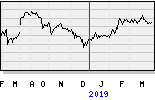
Total Corbion PLA BV is focusing its efforts on finding applications for its polylactic acid (PLA) in the field of food containers and packaging. Aims here are to market PLA as a material for prepped meal containers and cups, centering this effort on heat-resistant grades that have been lacking in past PLA offerings.
The makeup of PLA includes two types of lactic acid, with standard PLA containing 96 percent L-lactic acid and 4 percent D-lactic acid. In conventional products, the fact that D-lactic acid gets in between the L-lactic acid makes for an irregular helix link, with crystallization hindered and heat resistance low. Thermal softening here occurs at approximately 55–60 degrees Celsius.
By contrast, the heat-resistant grade, pure poly-L-lactic acid (PLLA), is polymerized while keeping D-lactic acid content to 0.5 percent or less. As a world leader in lactic acid, Corbion NV possesses lactic acid bacteria for producing L-lactic acid alone – and has leveraged this for commercialization. Heat resistance here is to the point where it can handle microwaving and boiling water.
One area being targeted for use of this is food containers. With major retailers and brand owners turning their attention to environmental initiatives, PLA is being viewed as a representative example of an environmentally friendly material for how it is plant-derived and biodegradable under certain conditions. Real-world examples to date of its container applications include strawberry and egg packaging, as well as salad and cold noodle containers.
Now Total Corbion PLA is taking aim at the market of prepped meal containers, leveraging here the heat resistance qualities on offer from its material. Already being looked at by convenience stores and supermarkets, plans are in the works for the company’s PLA to be picked up. And Total Corbion is marketing this for use in hot-beverage cups and the like as well.
There is also a prototype grade with 5–20 percent D-lactic acid and a low melting point that has been made, coming as a candidate for use in flexible packaging. By using film with this grade of PLA in the sealant layer, and PLA film with a higher melting point as the substrate layer, it becomes possible to create monomaterial multilayer film.
While PLA has poor gas barrier properties, a barrier layer can be provided through vapor deposition or some other such method. And if combined with a biodegradable barrier film, it can be approximated to packaging that is entirely biodegradable.
PLA is compatible with all sorts of molding methods, including extrusion for high molecular weight grades, injection molding for low molecular weight grades and fiber spinning for grades in between. Plans from Total Corbion as such are to offer customers a wide range of options, including heat-resistant grades, in aim of finding greater adoption for the material.
